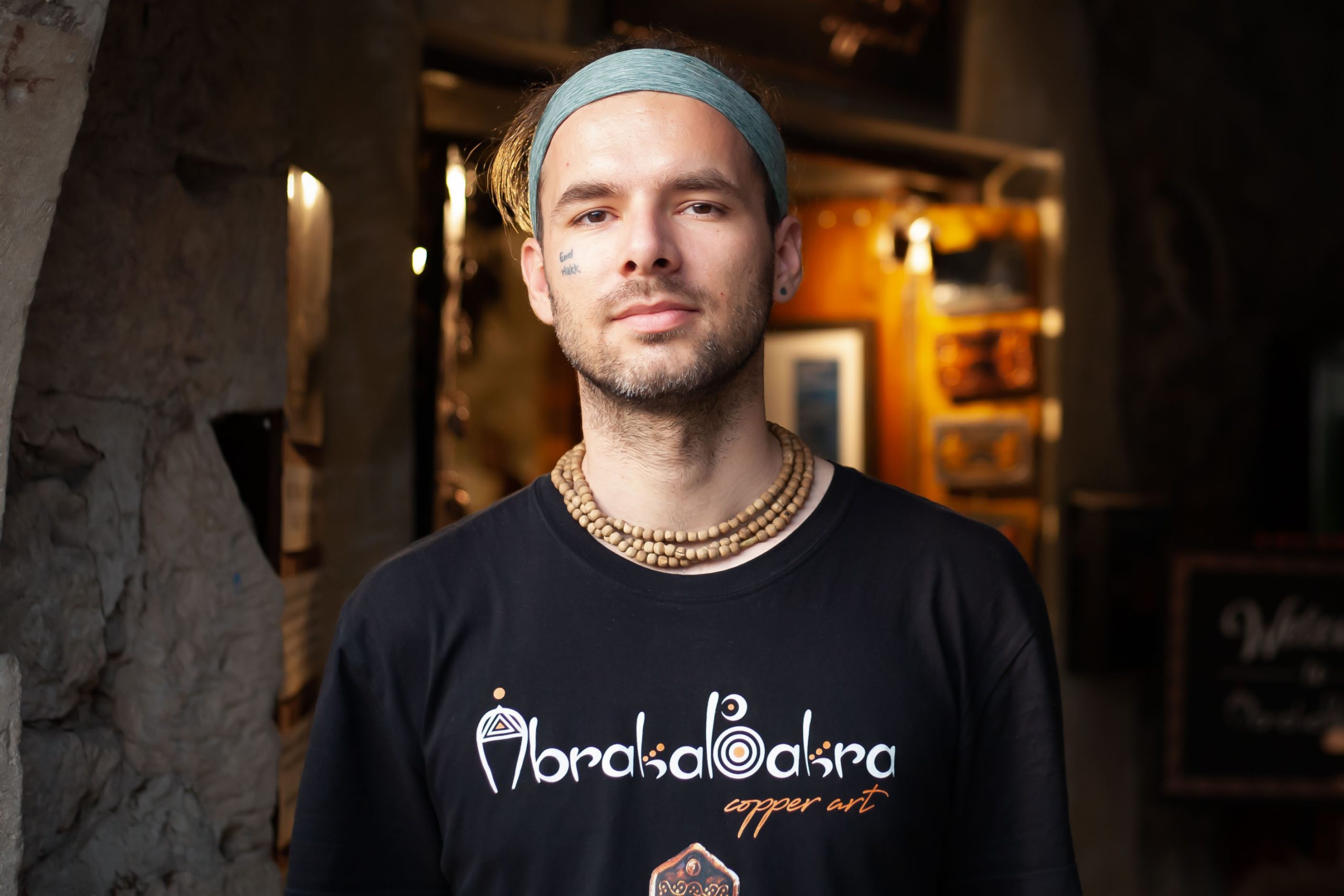
FROM THE HEART OF MOSTAR: A CRAFT THAT DEFIES TIME – THE STORY OF DENIS MUHAMMED DRLJEVIĆ
In the heart of the Old Town of Mostar, in streets filled with rich history, there are still craftsmen who have not succumbed to modern times or global emigration trends. One of them is Denis Muhammed Drljević, better known among locals as Dena. While many leave their homes in search of a better life, in Tabhana, one of the most renowned artisan quarters of Mostar, we can find Dena’s workshop that preserves the heritage of the traditional copper-smithing craft. This artist, through his skills and effort, not only fights for his survival but also for the survival of one of the oldest crafts in this city. His story is not just about art and craftsmanship. It is a story of struggle, of love for the city, and of people who, despite everything, remain faithful to Mostar, resisting economic, social, and political pressures. Despite the lack of adequate support and constant challenges, this craftsman finds a way to survive and continue doing what he loves. His works, handcrafted with great care, often end up in the hands of foreign tourists as well as local art lovers. However, the road to success has not been easy, and many questions remain about how traditional crafts like copper-smithing will survive in a rapidly changing world. From this conversation, you will gain insight into his personal story, the challenges he faces in his business, the role of local authorities in supporting small entrepreneurs and craftsmen, and Denis’s perseverance.
Interviewed by: Irma Leto Nametak
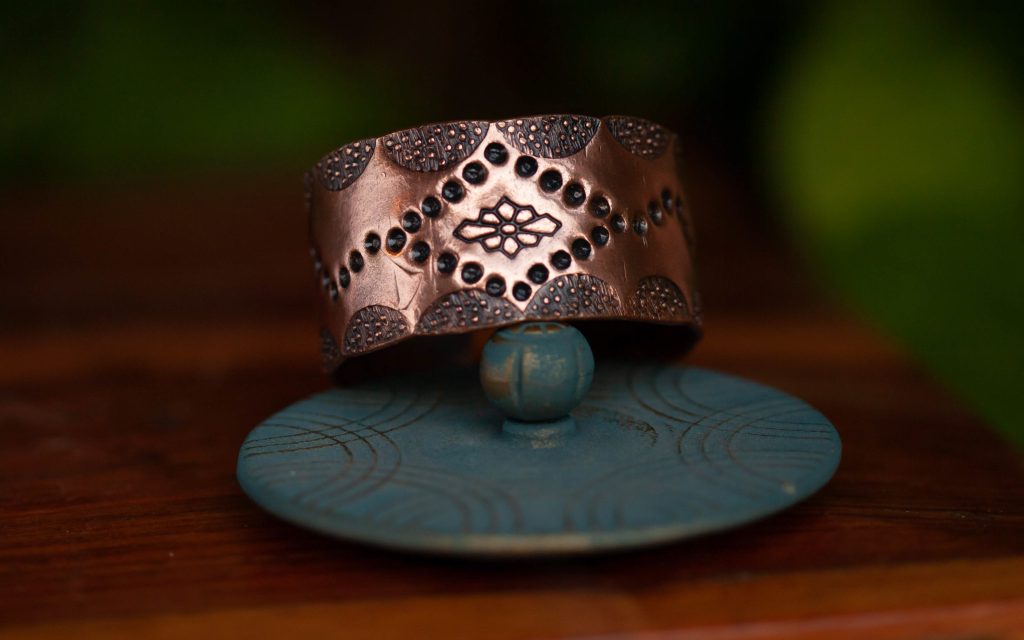
1. Can you tell me how you started working with copper and what motivated you to stay in Mostar despite all the challenges small craftsmen face?
Greetings. I started working with copper as a child, around the age of 8, learning from the late Pero Đidić. The first pieces I made I gave to family and friends, but occasionally someone would buy them or order something specific. I remember in fifth grade I made Islamic calligraphy for my religion teacher. Every winter I would carve reliefs with Pero, and then during the summer, I would distribute or give them to some of the merchants in the Old Town to sell.
I returned to Mostar in 2017 after studying in Zagreb, even though I had left with the intention of not coming back. I had planned to go to New Zealand where forestry is a highly regarded profession. However, the Western capitalist way of life in Zagreb did not suit me, and I knew it was even more pronounced in more developed countries. So, towards the end of my third year, with three exams unfinished, I decided to return to Mostar with the intention of turning the craft I had loved since childhood into a business. Even while I was in Zagreb, I continued to work with copper, making jewelry because I did not have the conditions for making reliefs in the rented apartments. During one visit to Mostar, I stopped by the Old Bridge and spoke with Safet Begović about making jewelry, and he generously passed on his knowledge to me, gave me some tools, and showed me how to make them, etc. This helped me a lot to decide to professionally pursue this craft, as making reliefs is a long and not very profitable job..
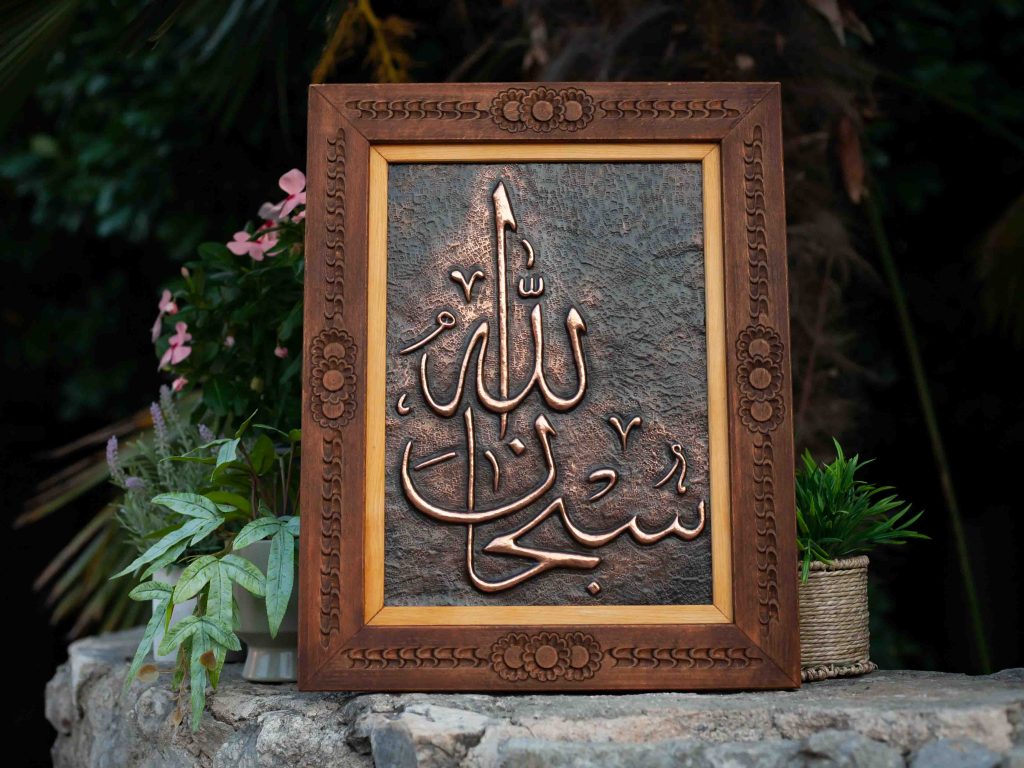
2. Do you draw inspiration for your motifs from the local history and culture of Mostar? If so, can you tell us more about that?
I draw inspiration for my motifs from various sources, with a special focus on local ones. I often use motifs from stećci (Bosnian tombstones) and the Old Bridge, and I have many projects in mind, but their realization requires a lot of time. I want to create my own interpretations of numerous cultural and historical symbols of Bosnia and Herzegovina, particularly Mostar and its surroundings. Among my sketches are drawings by the academic painter Kemal Kebo, who shared a studio with Pero Đidić for ten years. He made many quality sketches for copper reliefs that were once used by Pero and him, and now they are with me. I plan to make most of these sketches, of course, if time and resources allow. The sketches are mostly related to Herzegovina. Although the original sketches are the same, my works will differ from theirs because every artist develops their own style over time. I have already completed several such works.
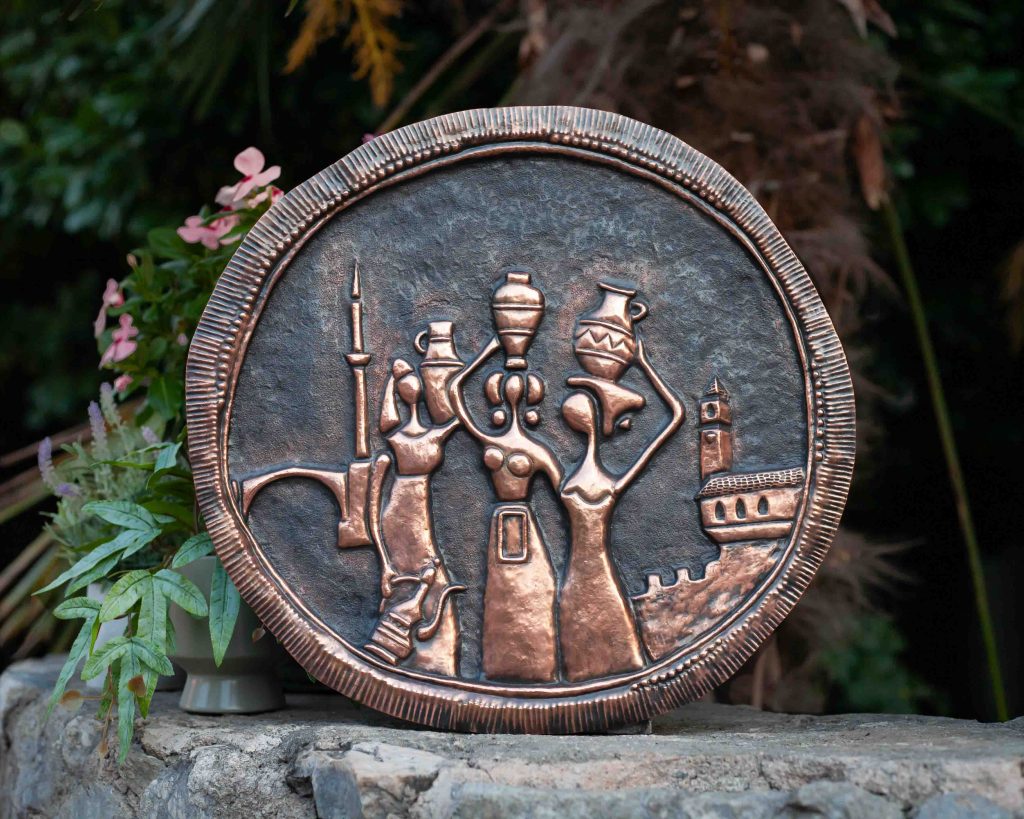
3. Do any of the motifs have a personal meaning for you, perhaps something that reminds you of your childhood, family, or the city?
Believe it or not, the motifs that have a special personal meaning for me are those related to the celebration of God. These include calligraphies depicting verses from sacred scriptures, ayats and mantras, sacred geometry, and certain symbols from spiritual traditions. This is an area that particularly interests me, and I am very happy to be doing a job in which I can express my spiritual beliefs and feelings. The greatest satisfaction I feel is when my work is connected to God and when I can contribute to the spread of spirituality, wisdom, and nobility among people.
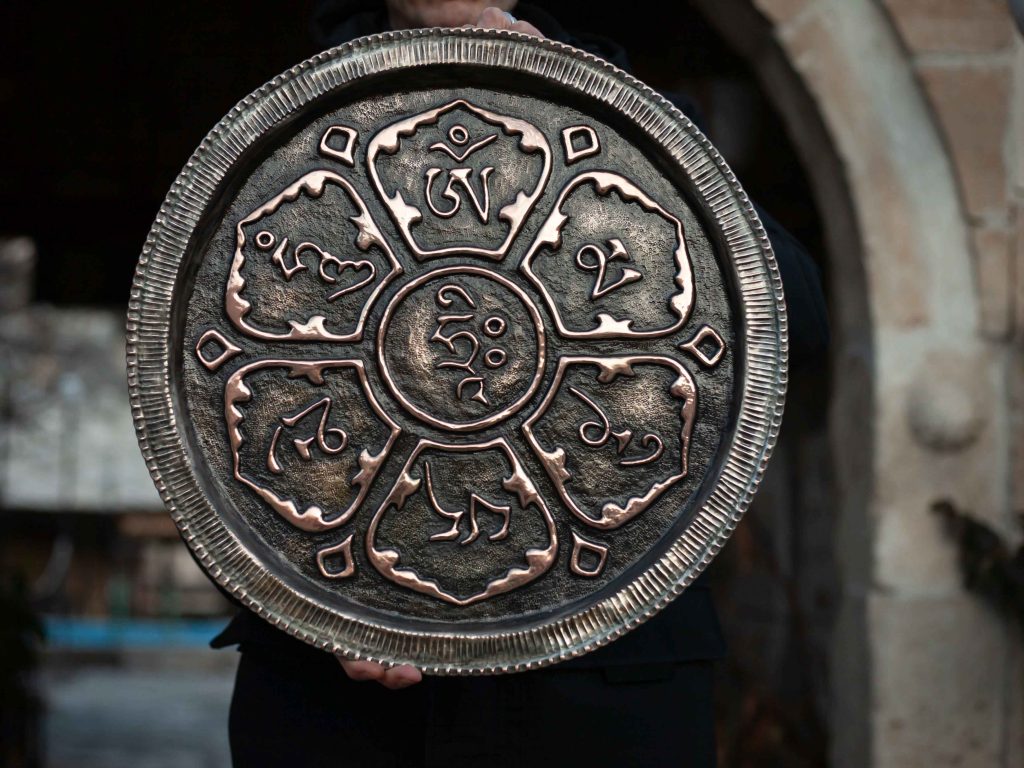
4. How does the audience react to the motifs you use? Are there any motifs that are particularly popular among your customers?
The audience generally reacts very positively to the motifs we use in AbrakaBakra, but the motifs of stećci and jewelry stand out the most. People from all over the world visit us, and anyone can find something that suits them – whether it is related to our Bosnian culture or something connected to their own tradition. They especially like it when they see symbols of different religions in one place, which often awakens or strengthens the belief in the possibility of living together with different cultures and traditions. Although my personal understanding of what I do may not align with some fundamentalist views, for me, all these motifs are in perfect harmony. All religions come from the same God, and I strive to convey what is universal in them and what unites us, rather than emphasizing the differences that divide us.

5. What is your favorite motif and why? Is there any piece that is particularly dear to your heart?
I usually like to say that my favorite piece is the one I just finished, because I always strive to improve my work and surpass previous results. I am currently finishing the “Flower of Life” motif and a calligraphy from the wall of Alhambra in Spain. Due to certain circumstances, these two works have particularly touched my heart at the moment.
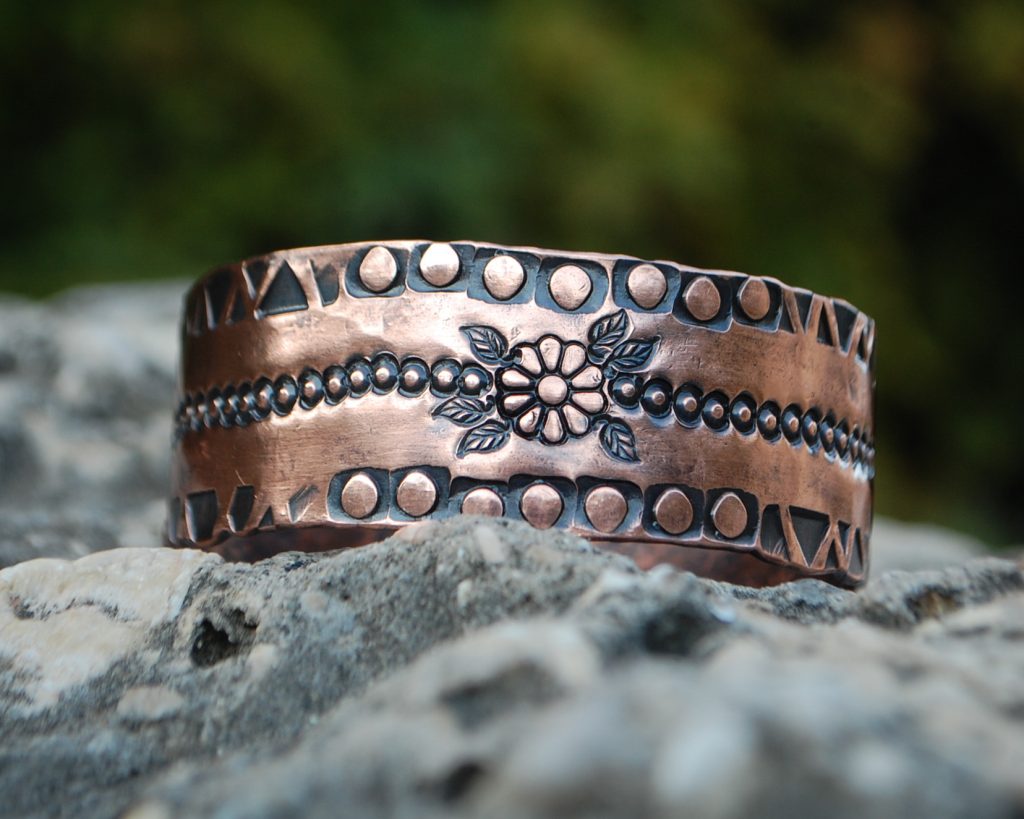
6. Do you change or adjust your motifs according to the seasons, holidays, or special events in Mostar?
I have organized my motifs into several larger groups: Stećci motifs, Mostar motifs, Islamic motifs, Christian motifs, Vaishnava motifs, Buddhist motifs, and Sacred Geometry. I alternate between them, completing one or two pieces from one group, then moving on to another, and so on. Since events in Mostar have almost no impact on the sales of my works, I stopped thinking about them, as well as about holidays. I treat every day as my holiday because I am alive, and I have given up on everything related to the establishment of Mostar because I don’t see myself there and feel unwelcome.
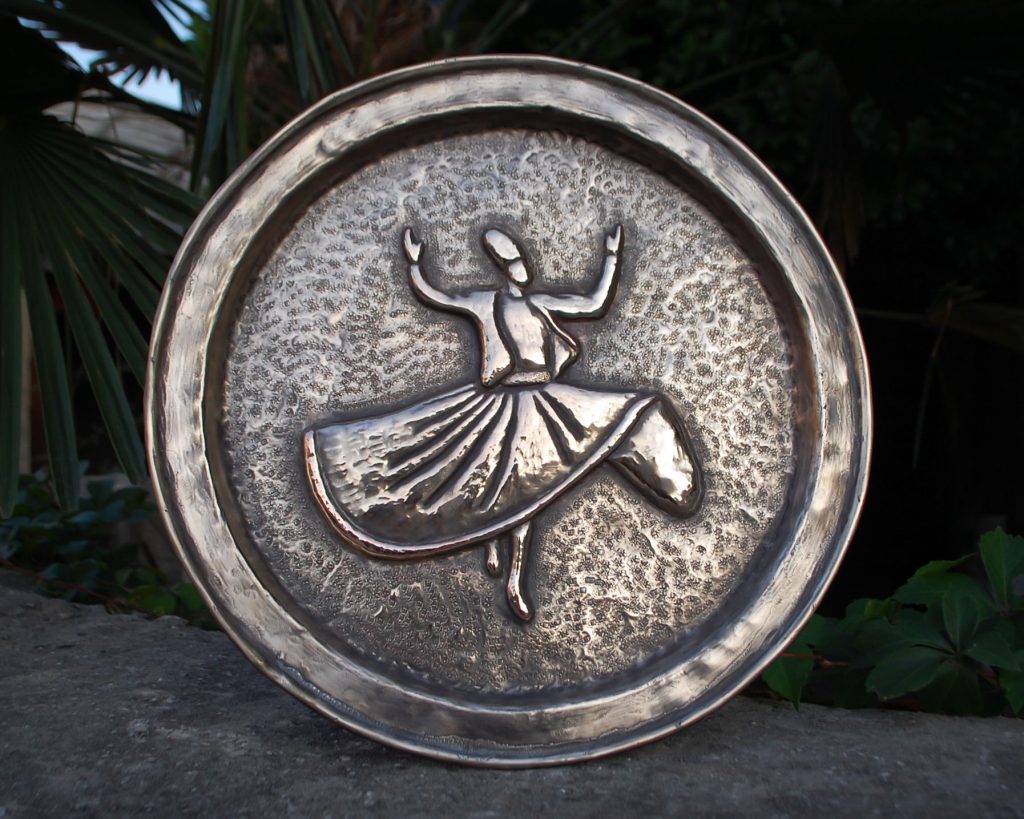
7. Given the current economic situation and pressures affecting small businesses, how are you managing to sustain your business and adapt to the market?
I manage to sustain my business thanks to tourists during the summer season. Unfortunately, I had to raise prices on some products, as the cost of living, raw materials, and tools has significantly increased. I try to adapt to the market by following customer needs and providing them with quality products that reflect our rich culture and tradition.
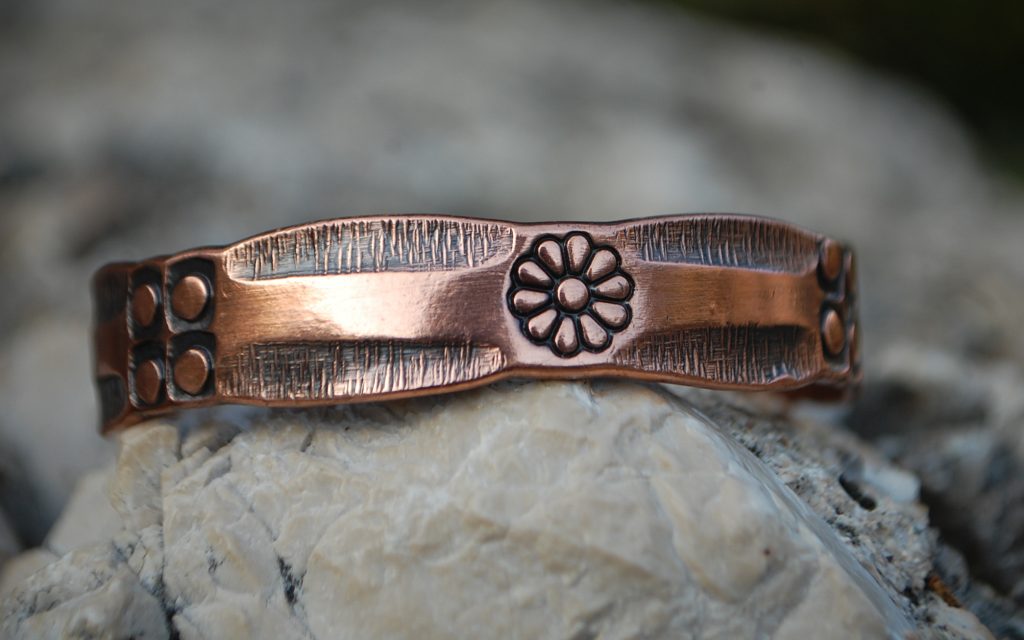
8. How supported are you by the local community and municipal authorities in your work? Do you receive any subsidies or incentives from the city?
Regarding the local community, I have support from individuals I value, and occasionally from local organizations working on projects related to tourism, cultural heritage, or traditional crafts. On the other hand, the municipal authorities have never supported me; quite the opposite, from the very beginning, they worked to tarnish my reputation and business, and to take away the studio where I work and occasionally live since 2018, even though it doesn’t belong to them, and they have no right to dispose of it. I am currently in a legal dispute with the City of Mostar regarding this studio, and my export to foreign countries is blocked. I have been unable to bring in electricity and water connections to the space for six years, even though I spend most of my time there and it is my residential address. At the first-instance court, I was not given the opportunity to present evidence or defend myself, and the judge declared the trial closed to the public, imposed additional fines on me, and threatened me with prison, all while repeatedly violating the Civil Procedure Act. Representatives of the City of Mostar are not even familiar with the correct address of the space, and they only visited it once for 10 minutes, during which they concluded that the space did not meet the minimum conditions for work. However, that didn’t stop them from trying to fraudulently take the studio. Since this is a complex case of corruption and fraud, I am preparing a new lawsuit against the City, the mayor, the judge handling the case, and the head of the real estate department. This struggle has taken up a lot of my time because I represent myself, so alongside work, I had to study law. No lawyer wanted to take my case to avoid conflict with the authorities or the Bar Association, even though I asked many well-known lawyers. I will consider it a great incentive when the bullies from the City Administration of Mostar finally stop harassing me. In 2020, I received an incentive from the Ministry of Economy of HNK as a newly opened entity, but never as a business that carries out a protected traditional craft. Thanks to a complaint to the Ombudsman for Human Rights, I proved that the regulations for granting incentives were unlawful. The Ministry promised to change it, but that was the end of it. I sued the Ministry of Economy of HNK in 2023, seeking the court to determine that I have the right to an incentive, but nothing has been done regarding that lawsuit. I also asked for emergency assistance from the Ministry at a time when some businesses in the Old Town were closing, as they were giving such assistance to criminals and politically connected individuals, but I received no response. I am currently working on registering a new company so I can export my products abroad. I plan to open an online store to reach the global market. I no longer expect any support from the authorities in Bosnia and Herzegovina.
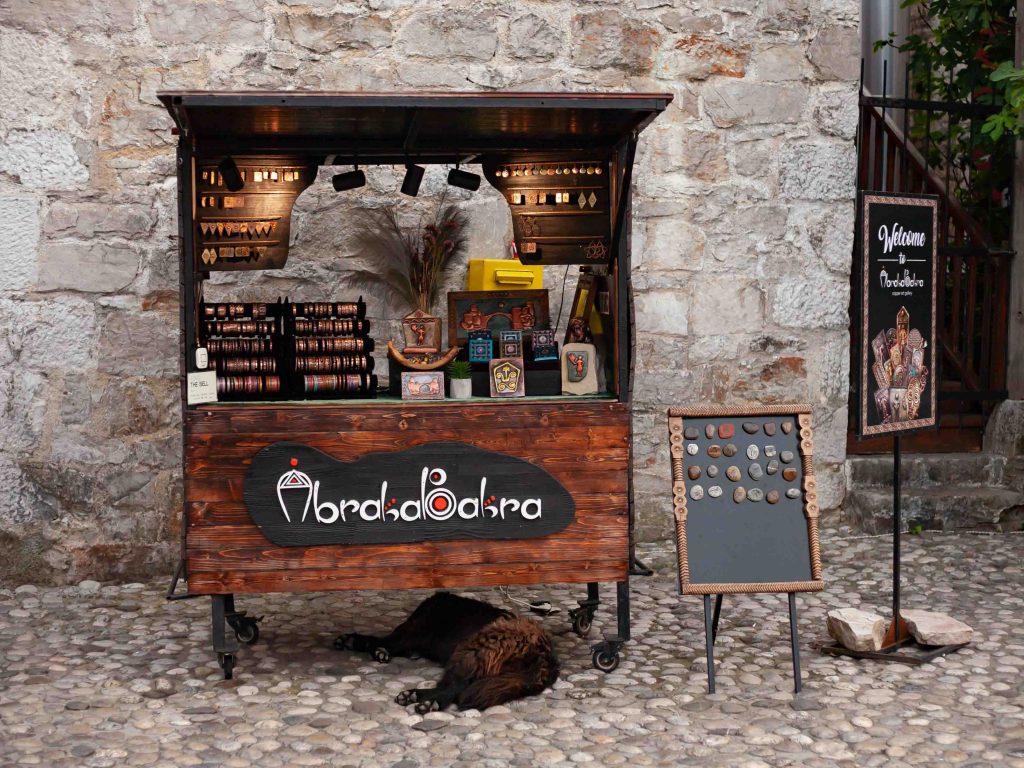
9. How do you find customers for your unique works? Do tourists mainly come, or do you have local clientele as well?
The majority of customers at AbrakaBakra Copper Art – specifically more than 90% – are tourists. Their demand for unique works significantly contributes to our business. Although the local clientele is smaller, I continue to try to attract domestic customers.
10. Given today’s digital era, do you sell your works online? If so, what challenges do you face in this process?
I am currently working on creating a website for AbrakaBakra Copper Art with support from USAID, as well as registering another company that will have permission to export my works. After that, I plan to expand the website by adding an online store to place my unique products on the global market. However, I am facing numerous challenges, including blockades from the authorities and certain legal obstacles in doing business. Many foreigners find it hard to believe and understand the problems we face in Bosnia and Herzegovina when starting a business, especially when we lack political connections or significant capital.
11. What do you think about the future of traditional crafts like yours in Mostar? Do you see the possibility for younger generations to continue preserving this type of craft?
I believe that in the future, there will be people who will continue the tradition of this craft and further develop it in new directions. I already have experience with young people who are interested in working and come to AbrakaBakra to learn the craft. Their enthusiasm and desire for knowledge give me hope that this skill will continue to live and develop through new generations.
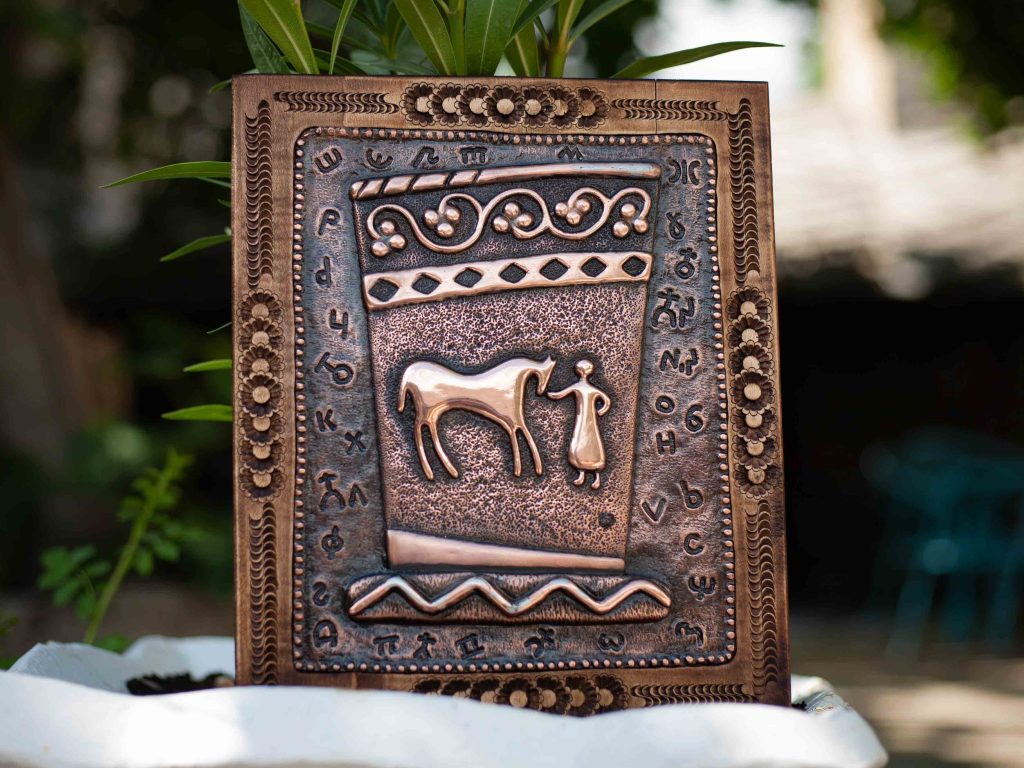
12. How important is it for you to preserve the cultural heritage of Mostar through your work, and what do you consider key to the survival of the silversmithing craft?
Preserving the cultural heritage of Mostar is extremely important to me, given that we have a rich and beautiful tradition. Through my work, I try to contribute to its preservation by perfecting and popularizing the coppersmithing craft and nurturing traditional motifs that I have already mentioned. The key factor for the survival of these protected crafts is certainly government support, which is currently lacking. However, I believe there will always be passionate individuals who, even without that support, will succeed in maintaining this tradition. Through prayer, meditation, a healthy lifestyle, and persistence, it is possible to overcome all obstacles. I try to be an example of this. No matter how many times I have fallen, through spiritual practice, I always find the strength to continue, and I deeply believe that in the end, I will reach better conditions and create greater works of art that will be remembered.
13. Have you ever thought about moving or leaving Mostar due to the difficulties in doing business here? What has kept you from leaving?
That thought crosses my mind almost every day, but I try not to pay too much attention to it. I have decided to stay and fight as long as I can. For now, I am managing to survive. If the situation becomes unbearable, I would probably consider moving. However, I believe that my talent and effort would not have a greater significance anywhere else than here. Bosnia and Herzegovina is like a Holy Land to me. Despite all the difficulties we face here, and all the global problems that affect us here, this is also an opportunity to solve those same problems, starting with ourselves. If we manage to overcome the obstacles that hold us back and find a way for all of us to progress – without new conflicts and without destroying lives and youth with vices and despair – we could become a beacon for others, perhaps even the first genuine Holy Land on this God-given planet.
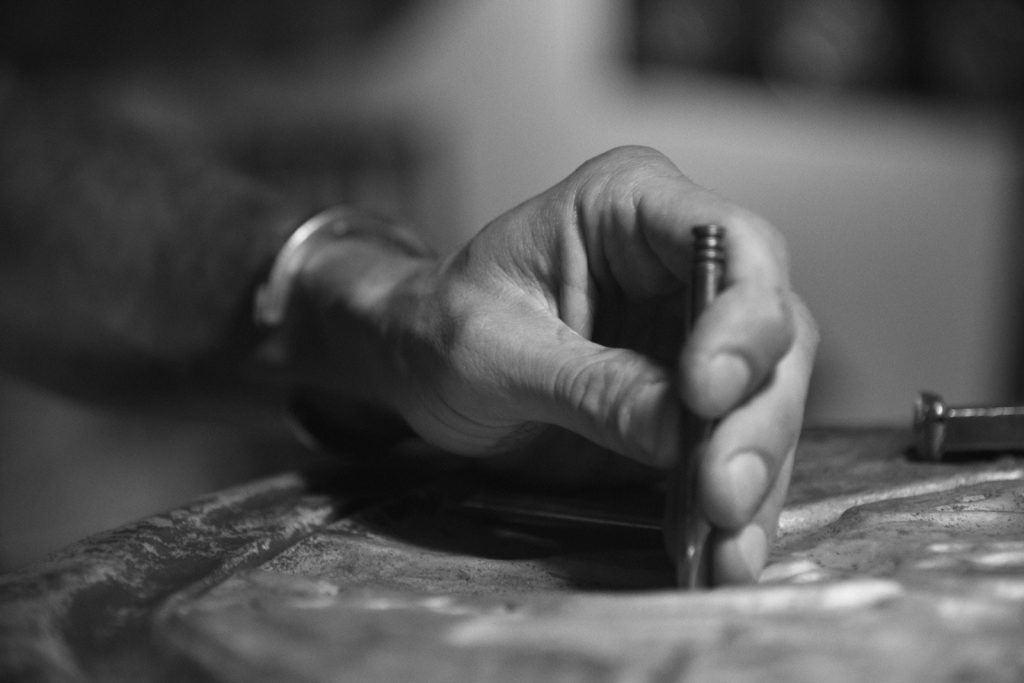
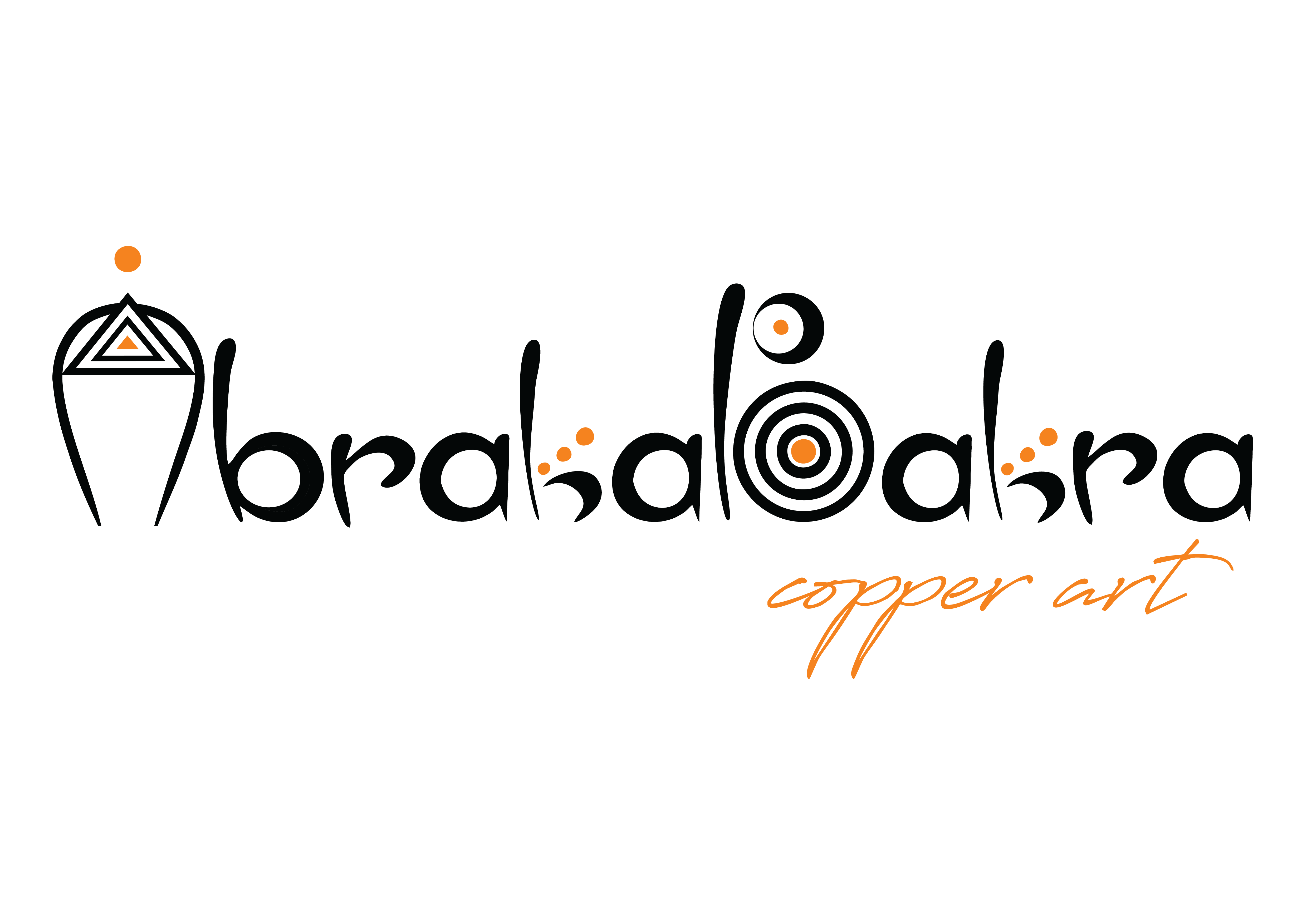

Leave a Reply